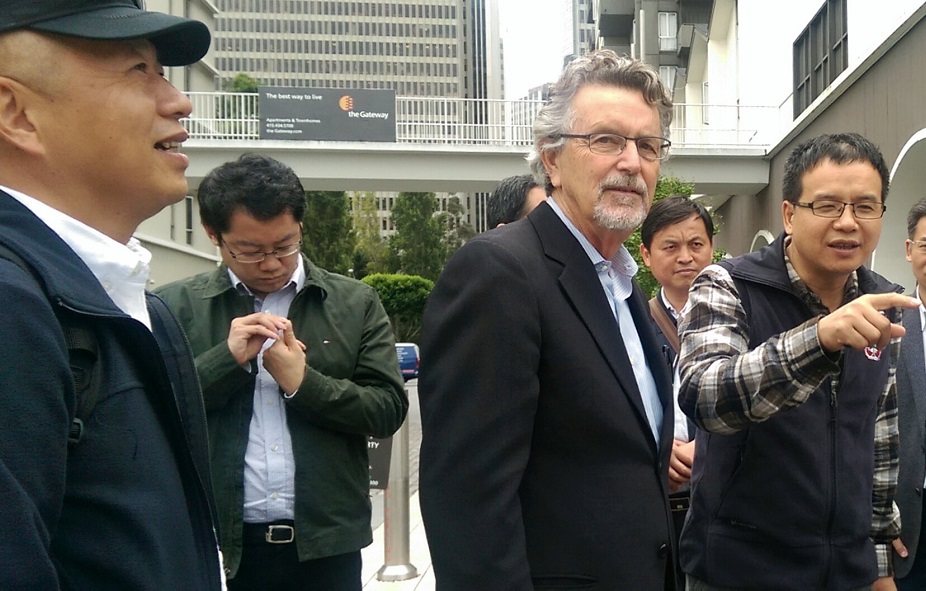By CC Huang
The importance of implementing smart policy in Chinese cities is more apparent than ever:
• More than 70 percent of China’s population will reside in urban communities by 2030
• Urban economic power is shifting toward China, which is estimated to hold 25 percent of the total economic GDP of the world’s top 750 cities by 2030
• China’s largest 35 cities are responsible for more than 40 percent of the country’s CO2 emissions, and their per capita emissions are more than double that of other areas.
On October 30th, Energy Innovation, in partnership with The Energy Foundation and Calthorpe Associates, had the opportunity to host approximately two dozen government officials from Wuhan (one of the largest cities in central China) for a training program on innovative energy policies and urban planning best practices that help to address the city’s environmental issues.
The training program, “Building the Innovative City: Energy and Urban Upgrades,” included the following components:
Policies that Work – Cities Edition: This session, led by Energy Innovation CEO Hal Harvey, identified important city-level policies and the design principles that make them successful. Principles such as rewarding performance over investment and requiring continuous improvement can ensure that the environmental, economic, and social benefits of sustainable policies are significant and long-lasting.
Innovation Opportunities in Electricity: Energy Innovation’s Sonia Aggarwal spoke about the importance of establishing renewable energy targets and standards, providing financing and incentives for on-site and clean generation, and expediting siting processes for renewable energy projects.
Low-carbon Cities: Principles and Practices for China: Peter Calthorpe, world-renowned architect and pioneer of transit-oriented development, spoke about The 8 Principles for low-carbon urban development and how they are vital to creating sustainable and livable cities.
Walking Tour of Downtown San Francisco: After his presentation, Calthorpe led the delegation on a walking tour of downtown San Francisco, emphasizing the networks of pedestrian-only paths, the mixed-use nature of the area, and the small blocks that made walking both convenient and enjoyable.

Photo: Peter Calthorpe leading Wuhan Delegation around Downtown San Francisco as a demonstration of small blocks, mixed use, and well-designed pedestrian pathways. (Source: CC Huang, Energy Innovation)
The Urban Foundation for Innovation – Applications to Optical Valley and Wuhan: Energy Innovation’s Chris Busch and CC Huang presented on the intimate connection between innovation and urban design. Busch and Huang highlighted the virtues of “the San Francisco model” for urban development, and advocated for its applicability in Wuhan, which is also an important hub for education, business, and technological innovation. The delegation was especially interested in how to attract talent and induce innovation in Optical Valley, a major technology and innovation park.
China’s government has been working hard to implement policies that support sustainable urbanization and low-carbon technologies, and it is beginning to pay off. China’s cities have some of the largest bike-share networks and most robust public transit systems in the world. Leaders must continue with these efforts to ensure that China stays on track to land on a low-carbon, sustainable future.
Featured image: Wuhan Skyline (Source: Evernory/CC By_NC-ND 2.0)
